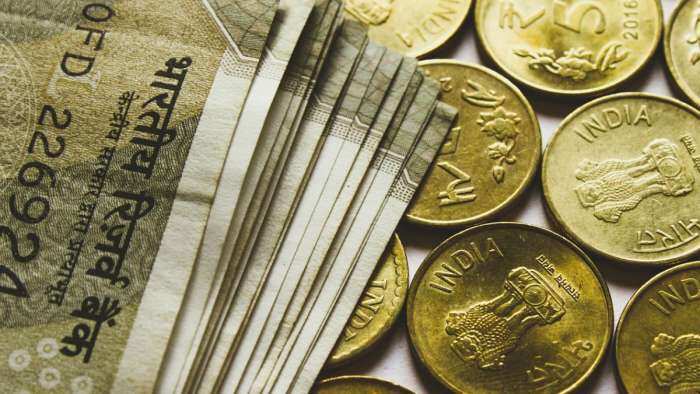The Future of Insurance: Role of blockchain in the insurance sector
Understand how blockchain can enhance the insurance sector by introducing automation, reducing cost, and improving data integrity.
)
We've all heard about blockchain technology. It first gained attention for its role in digital currencies and quickly became a standout innovation. But did you know that blockchain has a wide scope beyond financial transactions? This technology holds the potential to transform cybersecurity, transform banking systems, and enhance cloud management.
The gaming industry saw blockchain’s potential in online gaming and gambling and jumped on it. Eventually, the big boys—the finance, banking, and healthcare sectors—joined in tapping into blockchain's potential to realign their positioning.
But can this technology transform the insurance sector?
The answer is yes. This blog will explore how blockchain technology can aid the insurance sector by offering transparency, ensuring fraud detection, speeding up processing time, and reducing administrative costs.
Understanding Blockchain
Blockchain is a secure network of blocks (or nodes). Each block contains data, such as transaction details or medical data, that is linked to the previous block. Think of it as a stack of blocks with interlinked information. These stacked blocks form a decentralised digital ledger for recording data.
The best part about blockchain is its immutability—meaning that once you store any data, it cannot be altered. This makes the blockchain highly secure, transparent, and less prone to hacking.
In a traditional insurance system, your data is stored in one place (or centralized database), making it prone to cyberattacks or inefficiencies. With blockchain’s decentralised database, your data is digitally scattered, making it less vulnerable to attacks and creating a secure medium to manage sensitive data.
Blockchain’s Application in Insurance
Suppose Gunjan is buying a term insurance policy. She called a couple of agents and finally picked one, Sameer. Sameer guided Gujan through a lengthy approval process, and finally, she was done.
How can blockchain help Gunjan?
If Gujan were to rely on blockchain, she could complete this process without Sameer. With blockchain, each process (from underwriting to claims) will be automated and recorded live on a decentralized ledger. This is how:
Once the term insurance is purchased, Gunja’s policy will be stored in a blockchain. All the involved parties (i.e., Gunjan, the insurer, and the underwriter) can review and verify the details. Once the claim is filed, an automatic review is triggered based on the information on the blockchain. This streamlines the entire process.
Benefits of Blockchain in the Insurance Sector
Integrating blockchain technology insurance business has many perks. Let’s see what they are:
●Fraud Detection
Fraud detection is a pressing problem in the insurance sector, and blockchain’s decentralised data storage makes it extremely difficult to manipulate stored data. Using blockchain, historical records can be cross-verified easily to check if anyone has filed a false claim and instantly flag it.
●Reduced Administrative Cost
Blockchain technology is a cost-effective solution to the amount spent on administrative tasks like claim processing and verification. It can automate manual labor, cut down on paperwork, and eliminate the need for intermediaries. The money thus saved can be spent on enhancing the customer experience by improving services or payouts.
●Data Integrity and Transparency
Blockchain technology prioritises transparency so that all the involved parties can verify every transaction. This reduces disputes on claims or policy details when insurers are aligned with policyholders digitally ensuring data integrity.
●Improved Data Quality
Accurate and updated data is crucial for underwriting. Blockchain pools information (such as financial details or records) directly from reliable and trusted sources saving your time and preventing errors to fast-tracking policy issuance.
●Facilitate Product Development
Insurers can also develop personalised insurance products with blockchain technology. It helps to better understand policyholders and create products targeting specific risk profiles, ensuring the coverages are aligned with their needs.
How Can Blockchain Benefit Life Insurance Policyholders?
Integrating blockchain technology can also benefit your policyholders. Let’s understand how:
●Faster Claim Processing
One of the major concerns many of us face when it comes to life insurance is the extensive claim process, especially for term insurance. The beneficiaries have to wait weeks or months for their payout.
With blockchain technology, the claim process can be automated. Upon the claim filing, an automatic verification (like the policyholder’s death certificate or medical records) is triggered, eliminating manual intervention. This reduces the claim settlement time from weeks to a few days.
Most term insurance providers take about 30 days to process the claim but with the help of blockchain, this time can be reduced significantly.
●Instant Fund Disbursement
Instant disbursement is very critical for salaried professionals who depend on timely payouts. With blockchain, the payout is automatically credited into the beneficiary’s account after claim verification, bypassing the delay caused by manual checks and administrative processes.
This benefit is crucial in products like HDFC’s Click 2 Protect Super, where the term insurance payout can help policyholders manage financial responsibilities, including education loans or household expenses.
●Enhanced Reliability and Data Protection
Blockchain-embedded life insurance products are also highly secure and reliable. The decentralised data storage prevents data hacking, as manipulation of stored data is next to impossible in the blockchain.
Additionally, sensitive information like medical records, transaction details, and personal information is encrypted, only allowing access to authorised parties.

Final Thoughts
Blockchain has yet to become mainstream in the Indian insurance sector, but it will soon be once the regulatory hurdles and implementation costs are planned out. For salaried professionals looking for quick resolution, blockchain will make life insurance quicker, safer, and easier.
(This article is part of IndiaDotCom Pvt Lt’s sponsored feature, a paid publication programme. IDPL claims no editorial involvement and assumes no responsibility or liability for any errors or omissions in the content of the article.)
Get Latest Business News, Stock Market Updates and Videos; Check your tax outgo through Income Tax Calculator and save money through our Personal Finance coverage. Check Business Breaking News Live on Zee Business Twitter and Facebook. Subscribe on YouTube.
RECOMMENDED STORIES

NSC vs FD: Which guaranteed return scheme can give higher maturities on Rs 5,00,000, 7,00,000 & 9,00,000 investments in 5 years

Budget 2025: Analysts recommend buying 6 largecap, midcap stocks for short term for 15-30 days; NTPC, Asian Paints on the list

Retirement Planning: How Rs 8,00,000 one-time investment can create Rs 2,40,00,000 retirement corpus? See calculations to know

Old vs Revised New Tax Regime: How much tax will you save on Rs 7.5 lakh, Rs 10 lakh, Rs 15 lakh, or Rs 20 lakh annual income? See expert analysis
09:40 PM IST








 Blockchain technology to curb spam calls and messages; TRAI forms joint committee
Blockchain technology to curb spam calls and messages; TRAI forms joint committee  IITs prepare for Web 3.0 future, to provide crypto, blockchain, NFT courses
IITs prepare for Web 3.0 future, to provide crypto, blockchain, NFT courses INTEX announces adoption of 5ire blockchain to enter Web 3
INTEX announces adoption of 5ire blockchain to enter Web 3  FM Sitharaman flags anonymity as 'inherent risk' in use of blockchain technology, calls for precaution
FM Sitharaman flags anonymity as 'inherent risk' in use of blockchain technology, calls for precaution  Metria Blockchain Token Has Taken Over The Blockchain World
Metria Blockchain Token Has Taken Over The Blockchain World